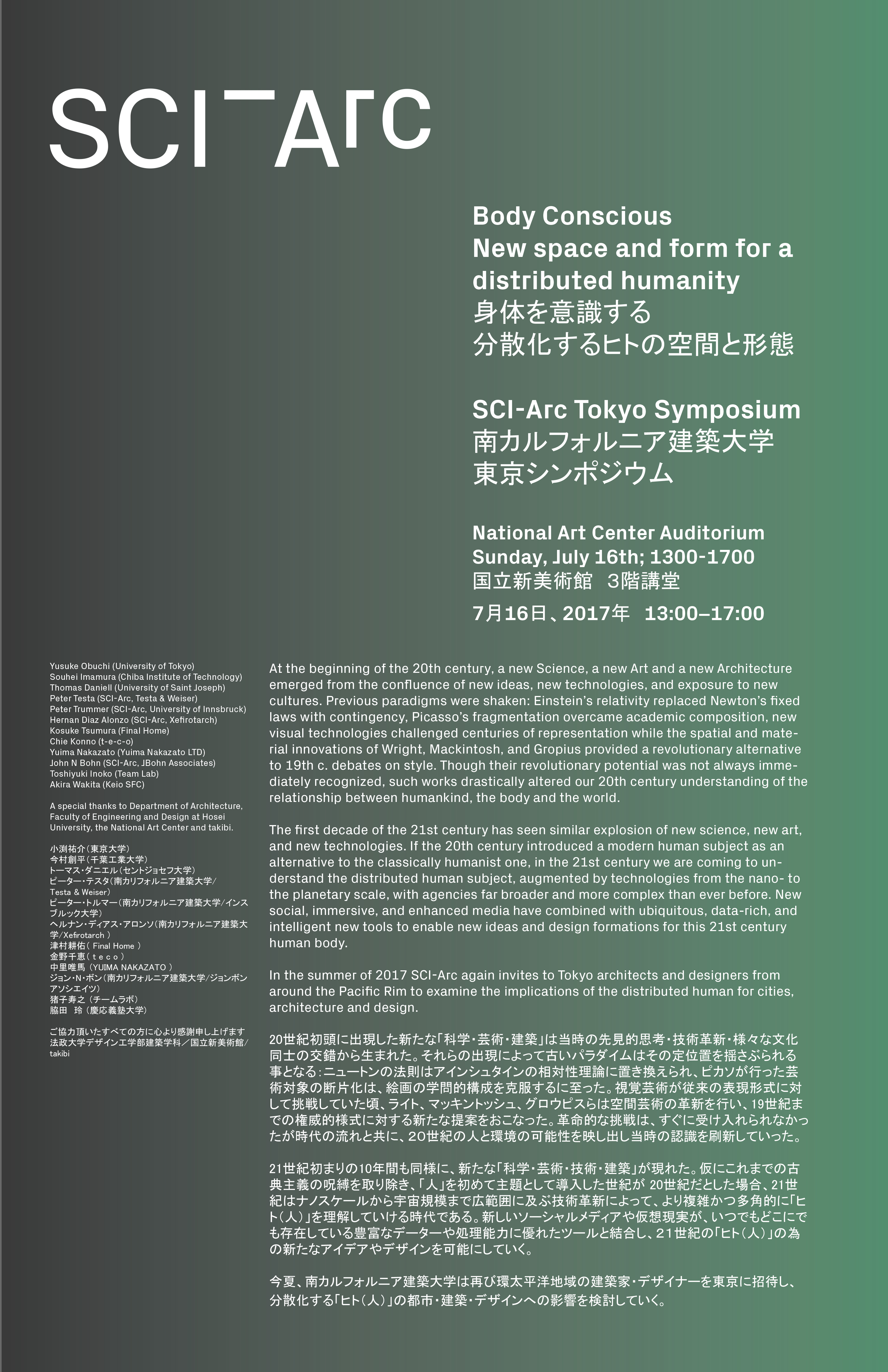Body Conscious
New space and form for a distributed humanity
身体を意識する
分散化するヒトの空間と形態
At the beginning of the 20th century, a new Science, a new Art and a new Architecture emerged from the confluence of new ideas, new technologies, and exposure to new cultures. Previous paradigms were shaken: Einstein’s relativity replaced Newton’s fixed laws with contingency, Picasso’s fragmentation overcame academic composition, new visual technologies challenged centuries of representation while the spatial and material innovations of Wright, Mackintosh, and Gropius provided a revolutionary alternative to 19th c. debates on style. Though their revolutionary potential was not always immediately recognized, such works drastically altered our 20th century understanding of the relationship between humankind, the body and the world.
The first decade of the 21st century has seen similar explosion of new science, new art, and new technologies. If the 20th century introduced a modern human subject as an alternative to the classically humanist one, in the 21st century we are coming to understand the distributed human subject, augmented by technologies from the nano- to the planetary scale, with agencies far broader and more complex than ever before. New social, immersive, and enhanced media have combined with ubiquitous, data-rich, and intelligent new tools to enable new ideas and design formations for this 21st century human body.
In the summer of 2017 SCI-Arc again invites to Tokyo architects and designers from around the Pacific Rim to examine the implications of the distributed human for cities, architecture and design.
20世紀初頭に出現した新たな「科学・芸術・建築」は当時の先見的思考・技術革新・様々な文化同士の交錯から生まれた。それらの出現によって古いパラダイムはその定位置を揺さぶられる事となる:ニュートンの法則はアインシュタインの相対性理論に置き換えられ、ピカソが行った芸術対象の断片化は、絵画の学問的構成を克服するに至った。視覚芸術が従来の表現形式に対して挑戦していた頃、ライト、マッキントッシュ、グロウピスらは空間芸術の革新を行い、19世紀までの権威的様式に対する新たな提案をおこなった。革命的な挑戦は、すぐに受け入れられなかったが時代の流れと共に、20世紀の人と環境の可能性を映し出し当時の認識を刷新していった。
21世紀初まりの10年間も同様に、新たな「科学・芸術・技術・建築」が現れた。仮にこれまでの古典主義の呪縛を取り除き、「人」を初めて主題として導入した世紀が 20世紀だとした場合、21世紀はナノスケールから宇宙規模まで広範囲に及ぶ技術革新によって、より複雑かつ多角的に「ヒト(人)」を理解していける時代である。新しいソーシャルメディアや仮想現実が、いつでもどこにでも存在している豊富なデーターや処理能力に優れたツールと結合し、21世紀の「ヒト(人)」の為の新たなアイデアやデザインを可能にしていく。
今夏、南カルフォルニア建築大学は再び環太平洋地域の建築家・デザイナーを東京に招待し、分散化する「ヒト(人)」の都市・建築・デザインへの影響を検討していく。
Yusuke Obuchi (University of Tokyo)
Souhei Imamura (Chiba Institute of Technology)
Thomas Daniell (University of Saint Joseph)
Peter Testa (SCI-Arc, Testa & Weiser)
Peter Trummer (SCI-Arc, University of Innsbruck)
Hernan Diaz Alonso (SCI-Arc, Xefirotarch)
Kosuke Tsumura (Final Home)
Chie Konno (t-e-c-o)
Yuima Nakazato (Yuima Nakazato LTD)
John N Bohn (SCI-Arc, JBohn Associates)
Toshiyuki Inoko (Team Lab)
Akira Wakita (Keio SFC)
A special thanks to Department of Architecture, Faculty of Engineering and Design at Hosei University, the National Art Center and takibi.
小渕祐介(東京大学)
今村創平(千葉工業大学)
トーマス・ダニエル(セントジョセフ大学)
ピーター・テスタ(南カリフォルニア建築大学/Testa & Weiser)
ピーター・トルマー(南カリフォルニア建築大学/インスブルック大学)
ヘルナン・ディアス・アロンソ(南カリフォルニア建築大学/Xefirotarch )
津村耕佑( Final Home )
金野千恵( t e c o )
中里唯馬 (YUIMA NAKAZATO )
ジョン・N・ボン(南カリフォルニア建築大学/ジョンボンアソシエイツ)
猪子寿之 (チームラボ)
脇田 玲 (慶応義塾大学)
ご協力頂いたすべての方に心より感謝申し上げます
法政大学デザイン工学部建築学科/国立新美術館/takibi
